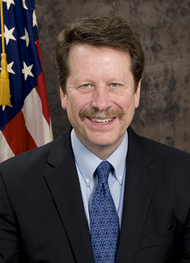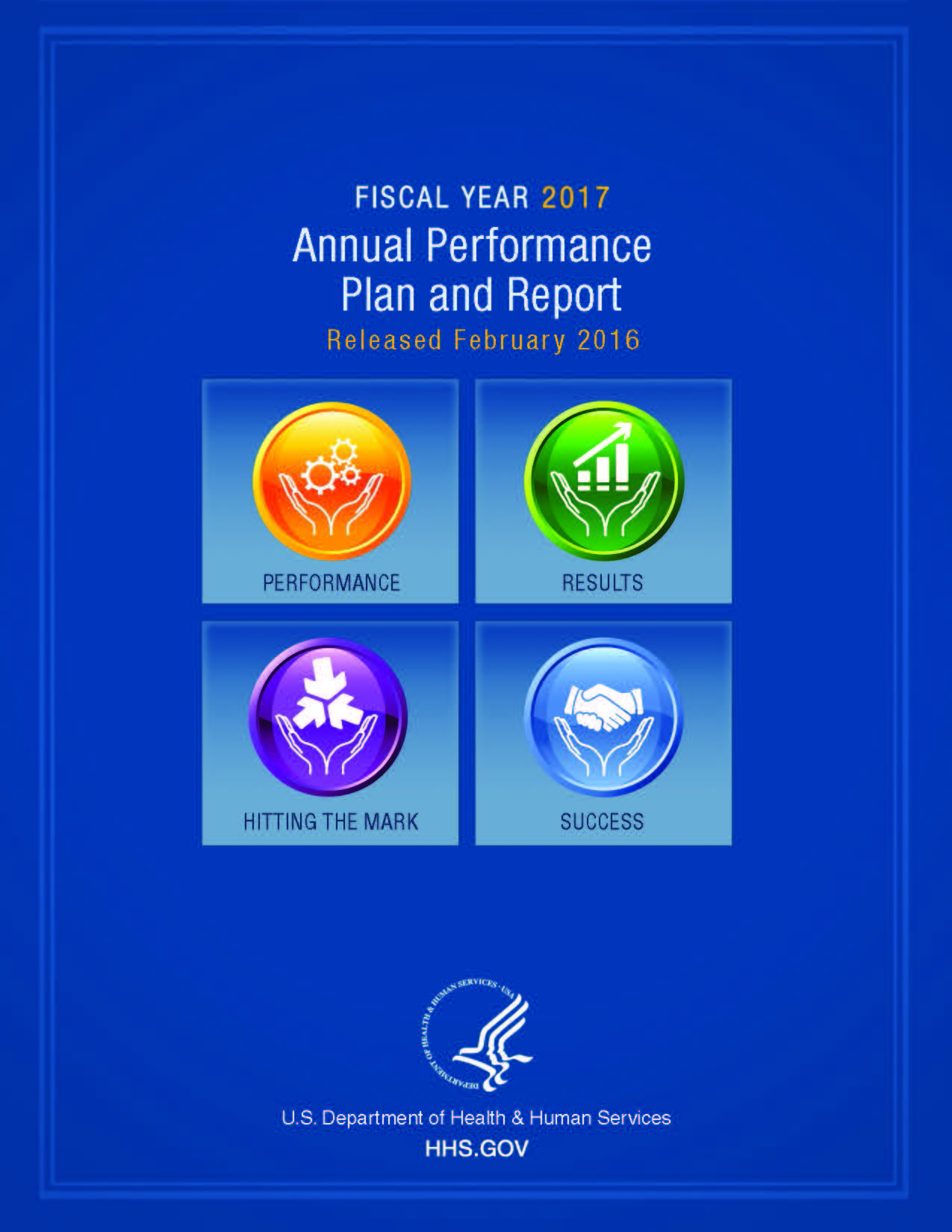- Home
- Agencies
- Department of Agriculture
- Department of Housing and Urban Development
- General Services Administration
- Department of Commerce
- Department of the Interior
- National Aeronautics and Space Administration
- Department of Defense
- Department of Justice
- National Science Foundation
- Department of Education
- Department of Labor
- Office of Personnel Management
- Department of Energy
- Department of State
- Small Business Administration
- Environmental Protection Agency
- Department of Transportation
- Social Security Administration
- Department of Health and Human Services
- Department of the Treasury
- U.S. Agency for International Development
- Department of Homeland Security
- Department of Veterans Affairs
- Goals
- Initiatives
- Programs
Primary tabs
Key to Changes
This text is Revised text
This word has been added to the text
This text is Last Published text
This word has been removed from the text
Modifed styling with no visual changes
FY 16-17: Agency Priority Goal
Reduce opioid-related morbidity and mortality
Priority Goal
Goal Overview
Opioid abuse and overdose present a nationwide public health challenge. Death by drug overdose is the leading cause of injury death in the United States, with deaths from opioids in particular increasing precipitously in the twenty-first century. Overdose deaths from prescription opioids, such as oxycodone, hydrocodone, and morphine, have more than quadrupled over the period 1999-2013. Overdose deaths involving heroin have increased significantly in recent years, more than tripling from 2010-20141. Agencies across HHS recognize the urgency of halting the rise of opioid use disorder and overdose, and are working to develop and implement the most effective interventions, from prevention through treatment.
In March of 2015, HHS Secretary Burwell introduced the Secretary’s Opioid Initiative to accelerate progress toward two broad goals: 1) decreasing opioid overdoses and overall overdose mortality and 2) decreasing the prevalence of opioid use disorder. This unifying strategy is designed to focus implementation efforts on action steps most likely to yield rapid and meaningful results. Specifically, the Initiative focuses on the three areas of reforming of opioid prescribing practices to reduce excess prescribing; improving naloxone development, access, and distribution; and expanding access to medication-assisted treatment (MAT). This Agency Priority Goal (APG) and accompanying metrics align with the three emphasis areas of the Initiative. Further, this opioid APG represents targeted assessment of the near-term progress that will be essential for achieving the broader Initiative goals of overall reduction in the morbidity and mortality associated with opioid use.
Strategies
2016-2017 Strategies and Specific Actions
This APG will track the timely progress of the three evidence-based areas of growth chosen to advance the Secretary’s Opioid Initiative. The three APG indicator metrics were identified to align with these three areas and to capture the effects of strategies implemented across HHS.
Prescribing Practices
The US out consumes all other countries in terms of defined daily doses of prescription opioids per million population. On average, in 2011-2013, the US consumed 51,347 defined daily doses per million population compared to Canada, the second highest consumer, at 29,067 defined daily doses per million population. Prior research has shown that prescription practices are strongly associated with increasing opioid related morbidity and mortality. Moreover, prescription opioid use disorder has been identified as a factor that can precede or occur concomitantly with heroin use.
In order to improve clinical decision making to reduce inappropriate opioid prescribing, the Centers for Disease Control and Prevention (CDC) is currently developing prescribing guidelines for the use of opioid analgesics to treat chronic pain outside the end-of-life setting. Through partnerships with the Office of the National Coordinator for Health Information Technology (ONC) and other external stakeholders, these guidelines will be converted to standardized and sharable clinical decision-making tools. Prescriber education efforts will also continue through 2016-2017 via the continuing medical education courses developed and provided by the National Institute on Drug Abuse’s NIDAMED and the Food and Drug Administration’s Risk Evaluation and Mitigation Strategy for extended-release/long-action opioid analgesics.
Beginning September 1, 2015, CDC funded 16 states through a four-year cooperative agreement. The funded states will receive awards between $750,000 and $1,000,000 a year to implement multi-pronged approaches to improving opioid prescribing and preventing prescription drug overdoses. States are required to enhance Prescription Drug Monitoring Programs (PDMPs), and must choose to implement effective community level prevention and/or health system and insurer approaches to improve prescribing and prevent overdoses. ONC will be working to standardize technical content for PDMP interoperability with health IT systems. These strategies are intended to enhance prescription monitoring, health IT, and data sharing to support appropriate pain management.
Prescribing practices that are associated with higher risks of overdose and with development of opioid use disorder include prescribing more drug than is required to treat acute pain, and prescribing high daily morphine milligram equivalents (MME). Tracking total MME dispensed will reflect changes in overall opioid consumption.
Naloxone
Naloxone is a drug that reverses the binding of opioid drugs to opioid receptors, and thereby reverses an opioid overdose. This lifesaving drug, when administered by first responders, such as police and emergency medical technicians, and by others likely to witness an opioid overdose, has been documented to safely reverse opioid overdose deaths4. A study in Massachusetts found that jurisdictions with Overdose Education and Naloxone Distribution (OEND) programs had significantly reduced opioid overdose death rates5.
The Food and Drug Administration (FDA), along with NIDA, CDC, SAMHSA, and Health Resources and Services Administration (HRSA) will continue collaborations aimed to: accelerate the development and availability of new naloxone formulations and products, identify and disseminate best practice naloxone delivery models and strategies, and expand utilization of naloxone, which will be reflected in the number of prescriptions dispensed for naloxone.
MAT
Medication-assisted treatment for opioid use disorder has long been identified as the most effective treatment; methadone, buprenorphine, and naltrexone are the three FDA-approved medications for this purpose. While MAT has been established as the standard of care for opioid use disorder, many treatment programs do not offer MAT, and many patients who could potentially benefit from MAT do not receive it6. The expansion of MAT availability is an important strategy for the success of the longer-term goal of reduction in opioid use disorder and opioid overdoses. Specifically, MAT access is reflected by the number of prescriptions for MAT medications, and also by the treatment capacity of clinicians who are authorized to prescribe buprenorphine for opioid use disorder through a Drug Addiction Treatment Act of 2000 (DATA 2000) waiver, and in the treatment capacity of opioid treatment programs (OTP) certified to administer methadone.
Agencies across HHS will continue to support research that informs effective use and dissemination of MAT and accelerates development of new treatment medications. During 2016-2017, increased access to clinically effective MAT services will be encouraged through SAMHSA grants for targeted MAT capacity expansion, among other priority activities. An increase in MAT utilization will be reflected in the number of unique patients receiving prescriptions for buprenorphine and naltrexone in a retail setting.
Progress Update
Analysis of prescription data from IMS Health provided to ASPE and FDA demonstrated the following:
- 52,680,388,425 total morphine milligram equivalents (MME) were dispensed in the outpatient US retail pharmacy setting in 2Q2016, representing a 5 percent decrease from 4Q2015 (the quarter preceding the start of this Agency Priority Goal).
|
Nationally Estimated Total Morphine Milligram Equivalents (MME) dispensed in the U.S. outpatient retail pharmacy setting, July 2014 through June 2016 by Calendar Quarters |
||||||||
|
3Q14 |
4Q14 |
1Q15 |
2Q15 |
3Q15 |
4Q15 |
1Q16 |
2Q16 |
|
|
MME |
||||||||
|
59,352,680,649 |
57,859,685,294 |
54,861,180,491 |
55,702,392,459 |
55,734,326,020 |
55,738,836,375 |
53,846,383,628 |
52,680,388,425 |
|
|
|
||||||||
|
Source: IMS Health National Prescription Audit. |
||||||||
- 32,514 prescriptions were dispensed for naloxone in U.S. outpatient retail pharmacies in 2Q2016, nearly triple the number dispensed in 4Q2015 (the quarter preceding the start of this Agency Priority Goal).
|
Nationally Estimated Dispensed Prescriptions for Naloxone from U.S. Outpatient Retail Pharmacies, July 2014 through June 2016 by Calendar Quarters |
|||||||||
|
|
3Q14 |
4Q14 |
1Q15 |
2Q15 |
3Q15 |
4Q15 |
1Q16 |
2Q16 |
|
|
|
Number of Prescriptions |
||||||||
|
Naloxone |
2,038 |
2,475 |
3,328 |
4,291 |
7,658 |
10,946 |
15,104 |
32,514 |
|
|
|
|||||||||
|
Source: IMS Health National Prescription Audit. |
|||||||||
- 981,863 unique patients received prescriptions for buprenorphine in the U.S. outpatient retail pharmacy setting in 2Q2016, and 151,515 unique patients received prescriptions for naltrexone, continuing a trend of quarterly increases. The number of patients receiving buprenorphine has increased 7% over 4Q2015 (the quarter preceding the start of this Agency Priority Goal), and the number receiving naltrexone has increased 19%.
|
Nationally Estimated Number of Unique Patients who Received Dispensed Prescriptions for Transmucosal Buprenorphine (Single- Ingredient or in Combination with Naloxone) from U.S. Outpatient Retail Pharmacies, July 2014 through June 2016 by Calendar Quarters |
|||||||||
|
|
3Q14 |
4Q14 |
1Q15 |
2Q15 |
3Q15 |
4Q15 |
1Q16 |
2Q16 |
|
|
|
Number of Patients |
||||||||
|
807,527 |
825,464 |
858,592 |
892,826 |
909,561 |
918,939 |
953,456 |
981,863 |
||
|
|
|||||||||
|
Source: IMS Health Vector One®: Total Patient Tracker (TPT). |
|||||||||
|
Nationally Estimated Number of Unique Patients who Received Dispensed Prescriptions for Naltrexone from U.S. Outpatient Retail Pharmacies, July 2014 through June 2016 by Calendar Quarters |
|||||||||
|
|
3Q14 |
4Q14 |
1Q15 |
2Q15 |
3Q15 |
4Q15 |
1Q16 |
2Q16 |
|
|
|
Number of Patients |
||||||||
|
|
85,494 |
91,852 |
100,299 |
114,964 |
121,067 |
127,647 |
140,084 |
151,515 |
|
|
|
|||||||||
|
Source: IMS Health Vector One®: Total Patient Tracker (TPT). |
|||||||||
- New MAT Waivers. A final SAMHSA rule increasing the highest limit for the number of patients to whom a DATA-Act-waivered physician can prescribe buprenorphine for medication-assisted treatment will be implemented, including the review and approval of new waivers.
Next Steps
Agencies across the Federal Government are intensifying efforts to address the problems of opioid addiction and overdose. Coordinated efforts to improve prescriber training, increase access to naloxone and MAT, forge public/private partnerships and launch public awareness campaigns comprise the activities of the ongoing HHS and White House opioid initiatives. Upcoming steps include:
- Publication of the Surgeon General’s Report. In November 2016, the Office of the Surgeon General will release the first-ever Surgeon General's Report presenting the state of the science on substance use, addiction, and health. The report will examine the health effects of drug and alcohol misuse from the perspectives of prevention, treatment, recovery, neurobiology, and delivery of care.
- Report to Congress. In November 2016, HHS will submit a report to Congress in accordance with the Protecting Our Infants Act, which will document activities throughout the Department related to neonatal abstinence syndrome (NAS), including research and programmatic gaps associated with addressing NAS, and recommendations for filling these gaps.
- PDMP Health IT Integration Initiative. The ONC PDMP and Health IT Integration Initiative, which seeks to solve the technical challenges to integrating PDMP data with health IT systems, will develop an Implementation Guide to allow health IT developers to follow standardized implementation steps in order to make PDMP data accessible with health IT systems and applications.
- Guidance Development. Guidance will be developed for Nurse Practitioners and Physician Assistants on how to become waivered to prescribe buprenorphine as part of medication-assisted treatment as authorized by the Comprehensive Addiction and Recovery Act (CARA) of 2016.
- Section 1115 Demonstrations. CMS will support state efforts to introduce substance use delivery system reforms through a Section 1115 demonstration initiative with the goal of developing comprehensive strategies to ensure a full continuum of services, integrating primary care and mental health treatment. States will also be supported in developing new payment mechanisms and performance quality initiatives.
- Opioid Initiative Funding. Funding awarded in FY2016 provided targeted support for ongoing programs contributing to the goal of reduced opioid morbidity and mortality, including:
- The Substance Abuse Service Expansion Supplement Funding from HRSA to improve and expand delivery of opioid use disorder treatment services at existing health centers, with an emphasis on MAT.
- The CDC funding award to states, Enhanced State Surveillance of Opioid-Involved Morbidity and Mortality, to improve the timeliness of fatal and non-fatal opioid overdose reporting.
- The CDC funding award to states, Prescription Drug Overdose: Data-Driven Prevention Initiative, to advance and evaluate state-level prevention for opioid overuse, misuse, abuse, and overdose.
- SAMHSA Grants to Prevent Prescription Drug/Opioid Overdose-Related Deaths (PDO) Cooperative Agreement, to reduce the number of prescription drug/opioid overdose-related deaths and adverse events.
- SAMHSA Strategic Prevention Framework for Prescription Drugs (SPF Rx) Cooperative Agreement, to target the priority issue of prescription drug misuse.
- NIDA services planning research grants to address a dramatic increase in adverse outcomes associated with increased opioid injection drug use in Appalachia (in partnership with the Appalachian Regional Commission).
- NIDA, SAMHSA, and CDC, in partnership with the Appalachian Regional Commission, will fund an initiative to help find solutions to the opioid use and overdose crisis in the nation’s rural regions. It will support comprehensive, integrated approaches to prevent opioid injection and its consequences, including substance use disorder, overdose, and infectious diseases. These projects will work with state and local communities to develop best practice responses to opioid injection epidemics that can be implemented by public health systems in the Nation’s rural communities.
- On October 19 and 20, FDA, with assistance from SAMHSA and NIDA, held a code-a-thon on the FDA campus with the objective of spurring the development of crowd-sourced mobile phone app to connect those experiencing an opioid overdose with carriers of naloxone. Competition entries are due November 7.
- On October 5, FDA held an Advisory Committee meeting exploring the appropriate dose of naloxone treatment for opioid overdose.
Expand All
Performance Indicators
Total morphine milligram equivalents (MMEs) dispensed
Number of prescriptions dispensed for naloxone
Number of unique patients receiving prescriptions for buprenorphine and naltrexone in a retail setting.
Contributing Programs & Other Factors
The HHS Operating and Staff Divisions that will report data metrics and provide goal leadership for the opioid APG are: the Centers for Disease Control and Prevention (CDC), the Centers for Medicare & Medicaid Services (CMS), the Food and Drug Administration (FDA), the Office of the National Coordinator for Health Information Technology (ONC), the National Institute on Drug Abuse (NIDA) of the National Institutes of Health (NIH), and the Substance Abuse and Mental Health Services Administration (SAMHSA).
Efforts toward the APG will take place across HHS, as the APG represents an intermediate step toward the larger goal of the Secretary’s Opioid Initiative. The Secretary’s Initiative is coordinated through the Office of the Assistant Secretary for Planning and Evaluation (ASPE), and partner agencies include the Agency for Healthcare and Research Quality (AHRQ), CDC, CMS, FDA, the Health Resources and Services Administration (HRSA), NIDA, ONC, and SAMHSA. Additional efforts are taking place within the Indian Health Service (IHS).
Other agencies outside HHS are also working to combat opioid abuse and overdose, including:
- the Office of National Drug Control Policy (ONDCP), through their Prescription Drug Abuse Prevention Plan
the Department of Justice (DOJ), through their naloxone toolkit for law enforcement and bureau of prisons (BOP) MAT pilot program
No Data Available











